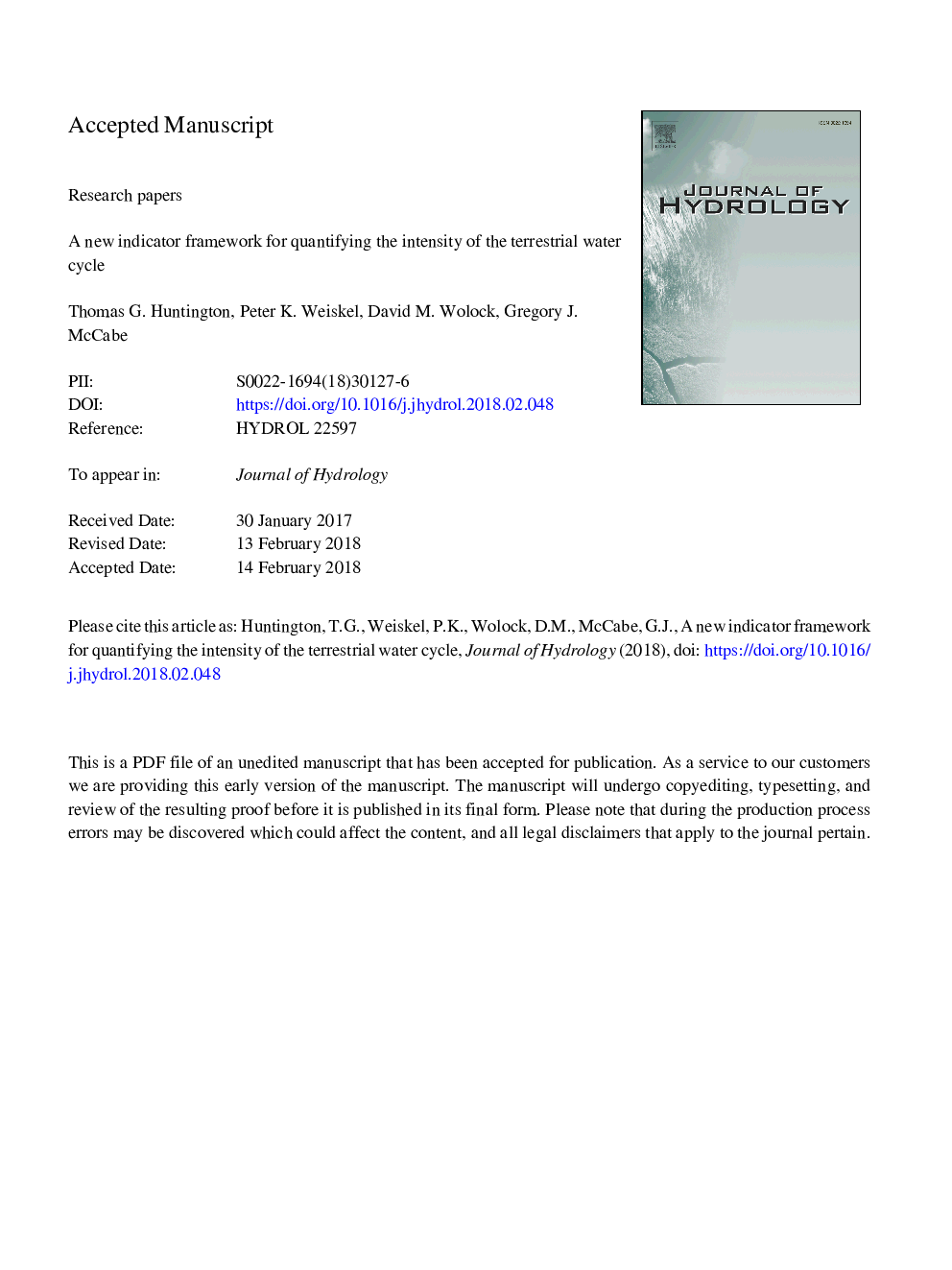| Article ID | Journal | Published Year | Pages | File Type |
|---|---|---|---|---|
| 8894897 | Journal of Hydrology | 2018 | 51 Pages |
Abstract
A quantitative framework for characterizing the intensity of the water cycle over land is presented, and illustrated using a spatially distributed water-balance model of the conterminous United States (CONUS). We approach water cycle intensity (WCI) from a landscape perspective; WCI is defined as the sum of precipitation (P) and actual evapotranspiration (AET) over a spatially explicit landscape unit of interest, averaged over a specified time period (step) of interest. The time step may be of any length for which data or simulation results are available (e.g., sub-daily to multi-decadal). We define the storage-adjusted runoff (Qâ²) as the sum of actual runoff (Q) and the rate of change in soil moisture storage (ÎS/Ît, positive or negative) during the time step of interest. The Qâ² indicator is demonstrated to be mathematically complementary to WCI, in a manner that allows graphical interpretation of their relationship. For the purposes of this study, the indicators were demonstrated using long-term, spatially distributed model simulations with an annual time step. WCI was found to increase over most of the CONUS between the 1945 to 1974 and 1985 to 2014 periods, driven primarily by increases in P. In portions of the western and southeastern CONUS, Qâ² decreased because of decreases in Q and soil moisture storage. Analysis of WCI and Qâ² at temporal scales ranging from sub-daily to multi-decadal could improve understanding of the wide spectrum of hydrologic responses that have been attributed to water cycle intensification, as well as trends in those responses.
Keywords
Related Topics
Physical Sciences and Engineering
Earth and Planetary Sciences
Earth-Surface Processes
Authors
Thomas G. Huntington, Peter K. Weiskel, David M. Wolock, Gregory J. McCabe,
